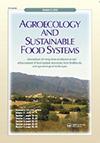Impact of High Rates of Vinasse on Some Pertinent Soil Characteristics and on Sugarcane Yield in Mauritius
引用次数: 18
Abstract
Ethanol production from the available 150,000 tons of molasses by the sugarcane industry in Mauritius would generate annually some 400,000 tons of vinasse that will need to be disposed of in an environmentally sound manner. As large scale application of vinasse has been reported to impart both benefits and demerits and data under conditions prevailing in Mauritius are lacking, the impact of disposing 25–100 m3 ha−1 vinasse in sugarcane fields on soil quality and on sugarcane production was studied in field trials at four different agroclimatic regions. Results showed that vinasse did not negatively affect soil pH and salinity. It increased slightly the soil organic carbon as well as the exchangeable K. The results, moreover, provided evidence that high application rates of vinasse would not affect cane or sugar yield. On the contrary, the data obtained during the three year study, which covered a plant cane crop and two ratoons, have shown that vinasse gave a higher cane yield (average of 84.9 T ha−1) than mineral fertilizers alone (average of 77.3 T ha−1). As all the treatment plots received the same N level, this increase in cane yield may be attributed to a better K nutrition as well as to an improvement in soil organic matter status brought about by the vinasse. The present study provides evidence that the sustainability of the productive capacity of soils in Mauritius would not be affected by the application of large doses of vinasse.高酒糟率对毛里求斯一些相关土壤特性和甘蔗产量的影响
毛里求斯甘蔗工业利用现有的15万吨糖蜜生产乙醇,每年将产生约40万吨酒糟,这些酒糟需要以无害环境的方式处理。据报道,大规模应用酒糟既有好处也有坏处,而且缺乏毛里求斯现有条件下的数据,因此,在四个不同的农业气候区域进行了实地试验,研究了在甘蔗田里处理25-100立方米ha - 1酒糟对土壤质量和甘蔗生产的影响。结果表明,酒糟对土壤pH和盐度没有负面影响。结果表明,高施用量不会影响甘蔗和食糖的产量。相反,在为期三年的研究中获得的数据,包括一株甘蔗作物和两个品种,表明酒糟的甘蔗产量(平均84.9吨公顷- 1)比单独使用矿物肥料的甘蔗产量(平均77.3吨公顷- 1)更高。由于所有处理地块施氮量相同,甘蔗产量的增加可能是由于更好的钾营养和酒糟带来的土壤有机质状况的改善。本研究提供的证据表明,毛里求斯土壤生产能力的可持续性不会因施用大剂量的葡萄碱而受到影响。
本文章由计算机程序翻译,如有差异,请以英文原文为准。
求助全文
约1分钟内获得全文
求助全文

 求助内容:
求助内容: 应助结果提醒方式:
应助结果提醒方式:


